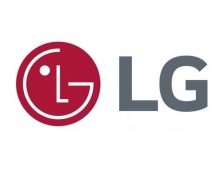
LG to Build Solar Cell Lines in Old PDP Plant
LG Electronics decided at its board of directors meeting held on October 20 to convert its A1 plasma panel-manufacturing line in Gumi, Korea, into solar cell production lines.
Both lines will produce crystalline silicon solar cells and modules with a capacity of 120MW each, LG said in a statement.
"Leveraging LG?s cumulative R&D knowledge in various photovoltaic technologies for the last three years as well as our mass manufacturing expertise will allow us to quickly become a global player in the solar cell and module manufacturing business," said Kwan Shik Cho, head of the Solar Cell Business Team at LG Electronics.
Mobile phone and appliance maker LG shut down one of its three plasma display panel (PDP) lines in 2007 as the business struggles with falling TV screen prices and competition with liquid crystal displays.
Industry experts forecast that crystalline silicon solar cells will make up the 80 percent of solar business, in contrast to thin film solar cells. Crystal silicon solar cell utilizes silicon wafer, while thin film solar cell coats light absorption layers and electrodes from various materials on a substrate, meaning thin film solar cell is relatively inexpensive but low in efficiency. Currently, the global solar industry market is valued at more than USD 10 billion dollars.
Both lines will produce crystalline silicon solar cells and modules with a capacity of 120MW each, LG said in a statement.
"Leveraging LG?s cumulative R&D knowledge in various photovoltaic technologies for the last three years as well as our mass manufacturing expertise will allow us to quickly become a global player in the solar cell and module manufacturing business," said Kwan Shik Cho, head of the Solar Cell Business Team at LG Electronics.
Mobile phone and appliance maker LG shut down one of its three plasma display panel (PDP) lines in 2007 as the business struggles with falling TV screen prices and competition with liquid crystal displays.
Industry experts forecast that crystalline silicon solar cells will make up the 80 percent of solar business, in contrast to thin film solar cells. Crystal silicon solar cell utilizes silicon wafer, while thin film solar cell coats light absorption layers and electrodes from various materials on a substrate, meaning thin film solar cell is relatively inexpensive but low in efficiency. Currently, the global solar industry market is valued at more than USD 10 billion dollars.





















